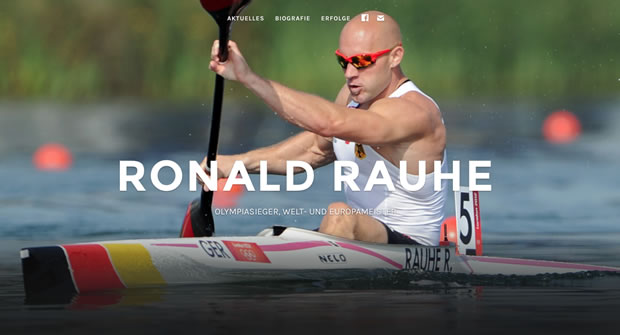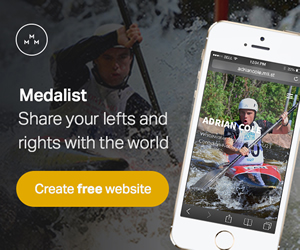How to write an amazing race report

Website Ronald Rauhe powered by Medalist.
Antoine Meunier | Medalist - Taking one out of the marathoner’s playbook. Nope, I’m not referring to their amazing ability to enjoy continuous pain for 3 hours straight. I’m talking about writing an awesome summary of your performance in a format that your audience will enjoy reading.
If you know distance runners or triathletes, you’ve grown to expect their race reports to show up on your Twitter or Facebook feed a couple days after their events.
I’ve always enjoyed reading those race reports even without having any real knowledge of those disciplines – I come from the other side of the pain spectrum where its short and sweet rather than long and painful.
And I’m not their only reader: everybody love those race report!
Why? Because race reports are so personal. When well written, it takes you beyond the results and get you to live the race from within.
It's a powerful storytelling tool and it's pretty simple: as an athlete trying to grow your online brand, a good race report is the key to reinforcing that bond with your audience.
What’s a race report?
It’s an athlete taking the time to look back his performances by writing about how things happened, what went wrong or right and why it did so.
Here’s a boilerplate to craft the perfect Race Report:
- Title. Make it clear and exciting
- Cover image. Set the tone.
- The build up. Drive momentum.
- Instagram picture. The clever use of cross promotion.
- The results. State the obvious and keep it short and sweet.
- The performance analysis. Go in depth on your performance.
- (optional) More cross promotion. Spice things up with a tweet!
- Outro. Time for a well placed plug.
Ready? Here we go:
The title. Keep it short. Keep it simple.
First things first, you’re not competing against the linkbait articles on Facebook like ‘I did [insert some random bullshit] and you won’t believe what happened next!’. Unlike BuzzFeed and other water cooler sites, people care about you and your amazing adventures. So you don't have to be misleading or to much of a tease either. Simply make your title to be relevant and include the ‘what’ and the ‘where’.
A good way to come up with a great title is to write a list of potential titles then pick the one you think will both be accurate and enticing enough for your audience to click on it.
 Start with a solid cover picture.
Start with a solid cover picture.
The art of picking the right picture for the right post could be an article by itself. General rule of thumb: pick an epic picture. You’re better off without a picture than with a crappy and boring one.
Take for granted that the picture is what will show on your audience’s timeline of Facebook. If it sucks. Nobody will read your post.
The build up. Warm up the audience.
Without being a total tease, get into the core of your story by recounting an anecdote.
Not much of a story teller? Stick with the when and where instead. Write about the venue, the crowd, the weather. Heck, write about the smell!
Show those results!
That’s where you drop the gravy. Write about your results and give context to them. Show some sportsmanship and name the top three finalist. Link their name to either their website or one of their social media profile.
If it make sense to do so, also link to the event’s results page where an astute reader would be able to get a more in-depth look at the results.
Time for an Instagram shot!
It gives the reader a break and it’s great way to cross promote your Instagram account :)
Performance analysis
That’s where you spill your guts. What went well. What didn’t. Why?
Use your best judgement with regard of the amount of information you are willing to give to write a good story… or to feel better.
Double down on social media
This one is optional but for the sake of cross promotion and growing your follower base, it’s always a smart idea to plug as many tweets and posts in here. For example, you could embed someone else's tweet you are mentioned in.
Finally, The shameless plug!
If the reader has made it this far, they are into you. Take advantage of their attention. Give them something to do.
Give them a clear invitation to like your Facebook page, to follow you on Twitter or to subscribe to your newsletter.
*Bonus* Namedropping sponsors!
Mention your sponsors (in clever ways!). Make it a rule of thumb to plug at least one of your sponsors in every article you write like ‘Back at the hotel, I logged on the Medalist platform to jot a quick race recap’. If it makes sense to do so, include a link to their site. This one though, is to be used with caution. Remember, you don’t want to end up here.
Side note, ideally you don’t want your report to be too short or too long either. The ideal length of a blog post is 7 minutes, 1,600 words. Take the opportunity to focus on the context rather than the results, go deep.





